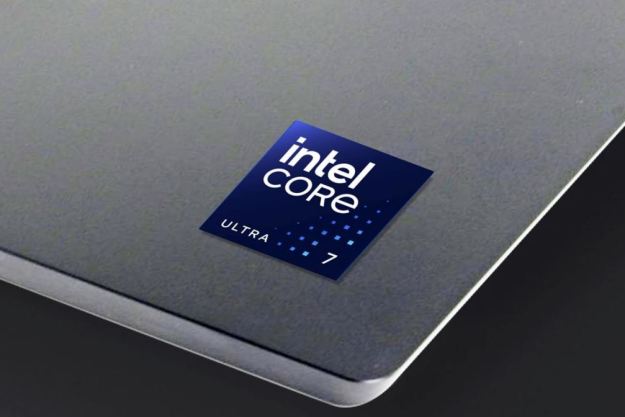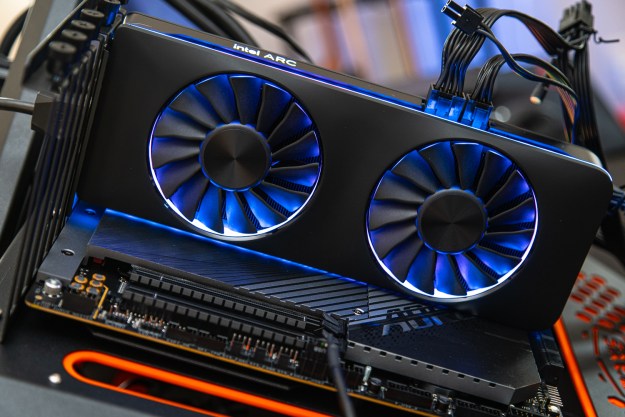Intel is gearing up to launch its first generation of high-performance graphics cards, and the leaks just keep coming. According to the latest rumors, Intel is set to launch three graphics cards in the Arc Alchemist lineup, noted by “Arc axxx” branding. Rumors also suggest that the flagship card will reach higher than we previously thought, maybe even outperforming the RTX 3070.
Most of the new information comes from Moore’s Law is Dead, a YouTube channel dedicated to leaks and analysis of PC hardware. According to a video, multiple sources close to Intel Arc Alchemist’s development have said that the flagship card could reach levels of the RTX 3070. One source said it’s “at least” as powerful as an RTX 3060 Ti, with another noting that driver optimization has been the biggest hurdle so far.
🆗Intel® Arc™ a-series graphics
🆖1st Gen Intel® Arc™ graphics pic.twitter.com/pgSNo5avVD— 188号 (@momomo_us) September 26, 2021
Previously, we and others referred to this top model as the Arc 512EU, noting its number of execution units (EUs). Another leaker — @momomo_us on Twitter — shared what the final naming scheme could be in the form of a usage chart that Intel could be sending to its manufacturing partners. He noted that Arc graphics cards will carry the “Arc axxx” branding.
Assuming Intel wants to note the generation, the flagship card could be the Arc a170 or Arc a700. Moore’s Law is Dead revealed that Intel plans to release three configurations, the other two of which could be called the Arc a150 and Arc a130.
Although Intel Arc Alchemist probably won’t compete with the flagship offerings from Nvidia and AMD, the latest rumors suggest it will perform better than we expected. As it stands, the rumors claim that the Arc a170 will target the RTX 3070, the Arc a150 will fall somewhere between an RTX 3060 and RTX 3060 Ti, and the Arc a130 will be comparable to a GTX 1650 Super.
Intel hasn’t confirmed the Arc a150, and it hasn’t announced anything about performance or pricing yet. We’re dealing in rumors here, so don’t take the performance estimates or branding as being set in stone.
The last bit of Intel Arc Alchemist news comes from an annotated diagram of the a130 die. Put together by @Locuza_ on Twitter, the shot confirms a lot of what we already know. It shows eight Xe Cores, which contain both shaders and matrix units for Intel XeSS, two render slices with four ray tracing units each, and a combined 96-bit memory bus.
Same as @SquashBionic, 96-Bit in total on the die graphic which Intel shared.
I have this annotated for the upcoming DG2 video: pic.twitter.com/hpSse4SYte— Locuza (@Locuza_) September 27, 2021
The Arc a170 and Arc a150 are rumored to feature a 256-bit and 192-bit memory bus, respectively. The top model will also come with 16GB of GDDR6 memory and run between 2.2GHz and 2.5GHz. As for the other models, we’re not sure right now, but rumors suggest the Arc a150 will come with between 8GB and 12GB of GDDR6, while the Arc a130 will come with between 4GB and 8GB.
We still don’t have word on pricing or a release date, but Moore’s Law is Dead suggests Intel is being aggressive with pricing. Intel has confirmed that the range is set to launch in the first few months of 2022, so we hope to hear more around CES 2022.
Editors' Recommendations
- Intel may fire the first shots in the next-gen GPU war
- How Intel could win the GPU war this year
- Intel claims up to 268% gaming boost with latest Arc graphics drivers
- Intel’s forgotten GPUs are still happening
- Intel isn’t giving up on GPUs yet




